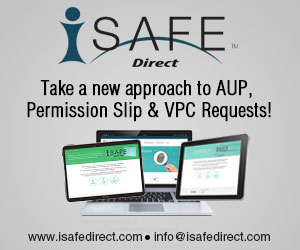Educators are increasingly embracing the idea that unified digital learning has the power to deeply engage the learner and transform our education system. However, tackling the challenges associated with implementing technology in the classroom, using online resources, software and apps in digital learning can be overwhelming.
In many cases, educators may not be aware of the regulatory requirements associated children’s privacy and using online resources. For example, the Children’s Online Privacy Protection Act (COPPA) imposes strict parental notice and consent requirements for websites or online services that provide access to, or collect personal information from, children under 13 years of age and requires website and online service operators to obtain “verifiable parental consent” for a child to use their services. While educators have an exemption, conflicts can arise where providers offer both educational and entertainment products. There are a number of regulations, and they sometimes conflict.
Additionally, all schools receiving federal E-Rate program funding to support their telecommunications systems are required to comply with the Children’s Internet Protection Act (CIPA) which mandates:
- Training and education on acceptable use, behavioral expectations, internet safety, and cyberbullying are provided to students and staff;
- Control measures to prevent unauthorized access to the district network, and unauthorized disclosure, use and dissemination of personal identification information regarding minors;
- The use of Internet filters blocking access to inappropriate material;
- An annual review of policies.
There are a few other concerns as digital learning is brought to the classroom:
- How do schools support a student’s 24/7, anytime, anywhere learning experience?
- What can schools do to harness the power of learning analytics for student success?
- How can schools cost-effectively provide the oversight of managing all of these technology tools and services?
So, yes, there are some hurdles to using unified digital learning in the classroom. But digital learning is efficient, cost-effective, up to date, and powerful. It is here to stay. Educators have a treasure chest of options for instruction and student learning evaluation that is not bound by time or place. Interactive and adaptive technology allows self-paced learning and provides teachers with student data for customized student instruction based on unique educational needs.
Studies even show that students using educational technology are more engaged and interested in the subject matter.
How can educators overcome the regulatory, risk and execution issues to leverage the benefits of unified digital learning?
- Anticipate change, and set yourself up for success: Create specific policies for the selection of digital learning programs, and keep a current inventory of the programs in use. Then, expect that policies and programs will change, maybe frequently, along with regulations, educational policies, and the introduction of new products. Use a digital process to create and communicate AUP policies so the district can send school, grade and even class specific AUP’s and, as changes occur, update the document. Plus, by going digital, it removes all the costs of manual, slow and expensive paper-based notifications.
- Achieve truly Verified Parental Consent: The clear communication of a specific AUP policy is only good if you know for a fact who saw it and signed it. Any paper-based distribution is flawed because the documents are not controlled. A digital AUP process is better if distribution is tied to a COPPA compliance directory and the receipt and digital signing can be verified.
- Become a privacy ninja: It’s much easier to protect privacy with a solid understanding of the core child privacy laws, including their discrepancies, but keep an eye out for changes. Take the time to read the privacy policies of any online resource you use. Make sure you know how they gather personal information, how they use it, if they share it, and if their practices conflict with statutory requirements.
- Choose high quality digital resources: There are any number of resources available to educators, including some that are free. Sometimes they are free like a puppy, where you get the content for nothing but need to pay for analytics, storage and updates. Make sure providers aren’t trying to generate ad revenue or introduce additional products for sale. Often, reasonably priced resources that offer content built to educational standards, update frequently, provide analytics to assess effectiveness, include inline support, and are clearly not commercializing kids are the best choice.
- Teach e-safety skills: Just as kids learn differently with digital resources, they are experiencing the world differently digitally. Child privacy laws are in place to keep them from being victims. Fortunately, one of the regulatory requirements under CIPA is focused on helping kids acquire important life skills associated with Appropriate Online Behavior, Social Networking and Chat Rooms, and Cyberbullying. While the school environment may be well protected, kids are online persistently outside of school, and they need those skills to protect themselves.




